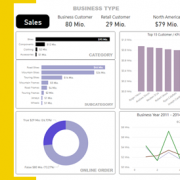How to Ensure Data Quality in an Organization?
Introduction to Data Quality
Today, the world is filled with data. It is everywhere. And, the value of any organization can be measured by the quality of its data. So, what actually is the quality of data or data quality, and why is it important? Well, data quality refers to the capability of a set of data to serve an intended purpose.
Data quality is important to any organization because it provides timely and accurate information to manage accountability and services. It also helps to ensure and prioritize the best use of resources. Thus, high-quality data will lead to appropriate insights and valuable information for any organization. We can evaluate the quality of data in certain aspects. They include accuracy, relevancy, completeness, and uniqueness.
Data Quality Problems
As the organizations are collecting vast amounts of data, managing its quality becomes more important every single day. In the year 2016, the costs of problems caused due to poor data quality were estimated by IBM, and it turned out to be $3.1 trillion across the U.S economy. Also, a Forrester report has stated that almost 30 percent of analysts spend 40 percent of their time validating and vetting their data prior to its utilization for strategic decision-making. These statistics indicate that the scale of the problems with data quality is vast.
So, why do these data quality problems occur? The main reasons include manual entry of data, software updates, integration of data sources, skills shortages, and insufficient testing time. Wrong decisions can be taken due to poor data management processes and poor quality of data. Because of this, many organizations lose their clients and customers. So, ensuring data quality must be given utmost importance in an organization.
How to Ensure Data Quality?
Data quality management helps by combining data, technology, and organizational culture to deliver useful and accurate results. Good management of data quality builds a foundation for all the initiatives of a business. Now, let’s see how we can improve the data quality in an organization.
The first aspect of improving the quality of data is monitoring and cleansing data. This verifies data against standard statistical measures, validates data against matching descriptions, and uncovers relationships. This also checks the uniqueness of data and analyzes the data for its reusability.
The second one is managing metadata centrally. Multiple people gather and clean data very often and they may work in different countries or offices. Therefore, you require clear policies on how data is gathered and managed as people in different parts of a company may misinterpret certain data terms and concepts. Centralized management of metadata is the solution to this problem as it reduces inconsistent interpretations and helps in establishing corporate standards.
The next one is to ensure all the requirements are available and offer documentation for data processors and data providers. You have to format the specifications and offer a data dictionary and also provide training for the providers of data and all other new staff. Make sure you offer immediate help for all the data providers.
Very often, data is gathered from different sources and may include distinct spelling options. Hence, segmentation, scoring, smart lists, and many others are impacted by this. So, for entering a data point, a singular approach is essential, and data normalization provides this approach. The goal of this approach is to eliminate redundancy in data. Its advantages include easier object-to-data mapping and increased consistency.
The last aspect is to verify whether the data is consistent with the data rules and business goals, and this has to be done at regular intervals. You have to communicate the current status and data quality metrics to every stakeholder regularly to ensure the maintenance of data quality discipline across the organization.
Conclusion
Data quality is a continuous process but not a one-time project which needs the entire company to be data-focused and data-driven. It is much more than reliability and accuracy. High level of data quality can be achieved when the decision-makers have confidence in data and rely upon it. Follow the above-mentioned steps to ensure a high level of data quality in your organization.










Leave a Reply
Want to join the discussion?Feel free to contribute!